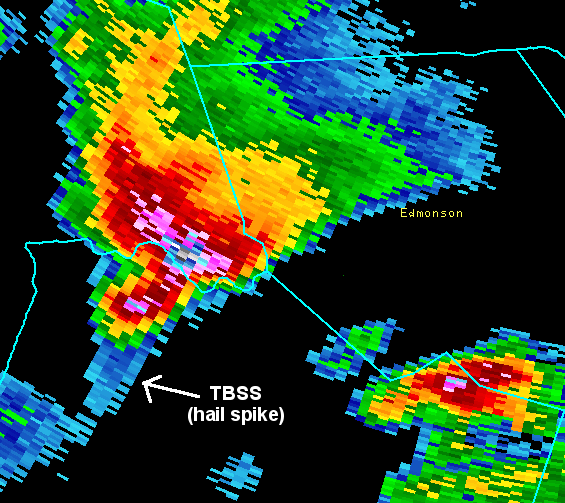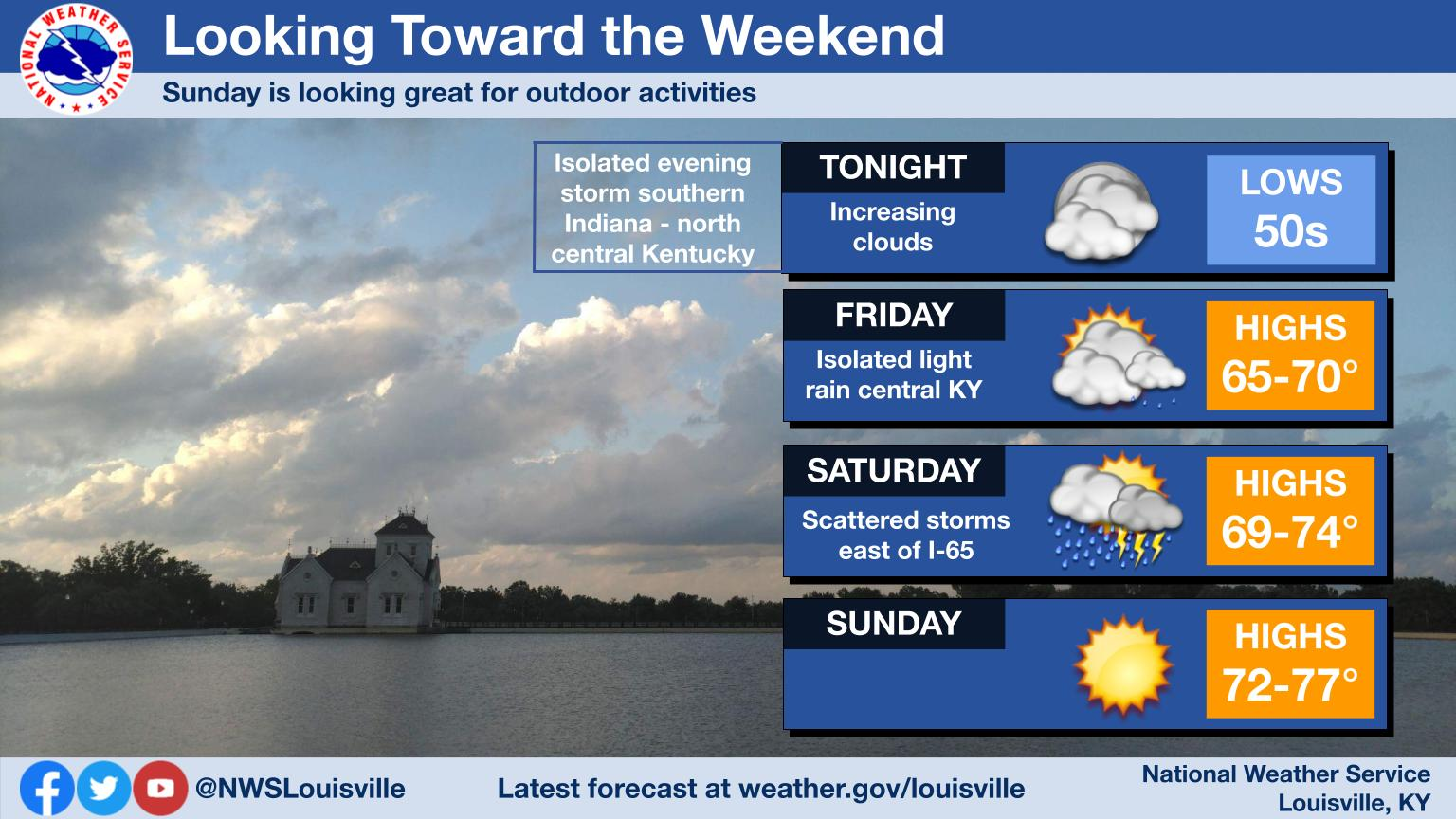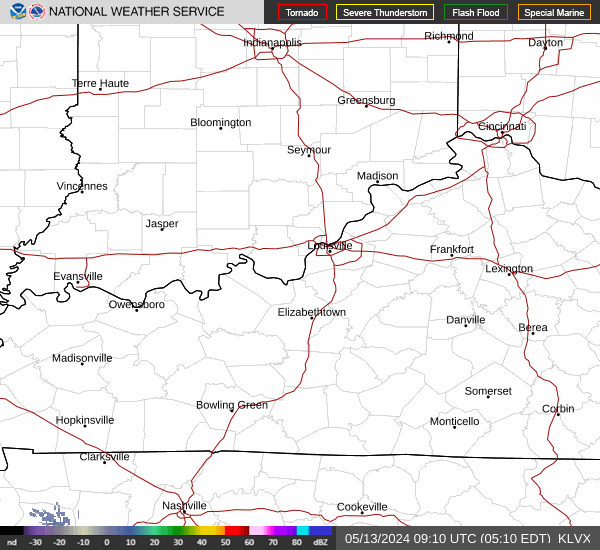Louisville, KY
Weather Forecast Office
 |
Base reflectivity data at 0.5 degree elevation angle from the KLVX WSR-88D Doppler Radar. Reflectivity shows where and how hard it is raining or snowing, as well as precipitation intensity trends and movement. Blue and green colors represent light-to-moderate rainfall. Yellow and orange colors show moderate-to-heavy precipitation, while red is very heavy rainfall and pink and blue colors inside the red color represent hail of different sizes. At left is a close-in view of a supercell thunderstorm over central Kentucky on March 2, 2012. The storm produced very large hail (golf ball to baseball size in diameter). Note to the south-southwest of the hail core is an elongated axis of weak returns (blue color). This axis is "down-radial" from the hail core. This is called a three-body scatter spike (TBSS), or hail spike, and is an indication that large hail is contained in the thunderstorm. However, the TBSS signature itself is not real, i.e., it is not raining where the spike is. Instead, it is an erroneous return of weak energy back to the radar after the original beam of energy from the radar hits the large hail in the storm. |
Current Hazards
Hazardous Weather Outlook
Storm Prediction Center
Submit a Storm Report
Advisory/Warning Criteria
Radar
Fort Knox
Evansville
Fort Campbell
Nashville
Jackson
Wilmington
Latest Forecasts
El Nino and La Nina
Climate Prediction
Central U.S. Weather Stories
1-Stop Winter Forecast
Aviation
Spot Request
Air Quality
Fire Weather
Recreation Forecasts
1-Stop Drought
Event Ready
1-Stop Severe Forecast
Past Weather
Climate Graphs
1-Stop Climate
CoCoRaHS
Local Climate Pages
Tornado History
Past Derby/Oaks/Thunder Weather
Football Weather
Local Information
About the NWS
Forecast Discussion
Items of Interest
Spotter Training
Regional Weather Map
Decision Support Page
Text Products
Science and Technology
Outreach
LMK Warning Area
About Our Office
Station History
Hazardous Weather Outlook
Local Climate Page
Tornado Machine Plans
Weather Enterprise Resources
US Dept of Commerce
National Oceanic and Atmospheric Administration
National Weather Service
Louisville, KY
6201 Theiler Lane
Louisville, KY 40229-1476
502-969-8842
Comments? Questions? Please Contact Us.


 Weather Story
Weather Story Weather Map
Weather Map Local Radar
Local Radar